Mahavira was an influential 9th century Indian mathematician from southern India. He wrote the Ganita-Sara Samagraha, one of the earliest and most important texts entirely devoted to mathematics in India. The text consisted of 9 chapters covering all mathematical knowledge of the mid-9th century, including arithmetic operations, fractions, equations, areas, and volumes. It built upon the work of earlier mathematicians like Brahmagupta but also advanced mathematical understanding with original contributions such as techniques for solving various types of equations and approximate formulas for the areas of ellipses. The text provides a valuable record of the state of Indian mathematics in the 9th century.
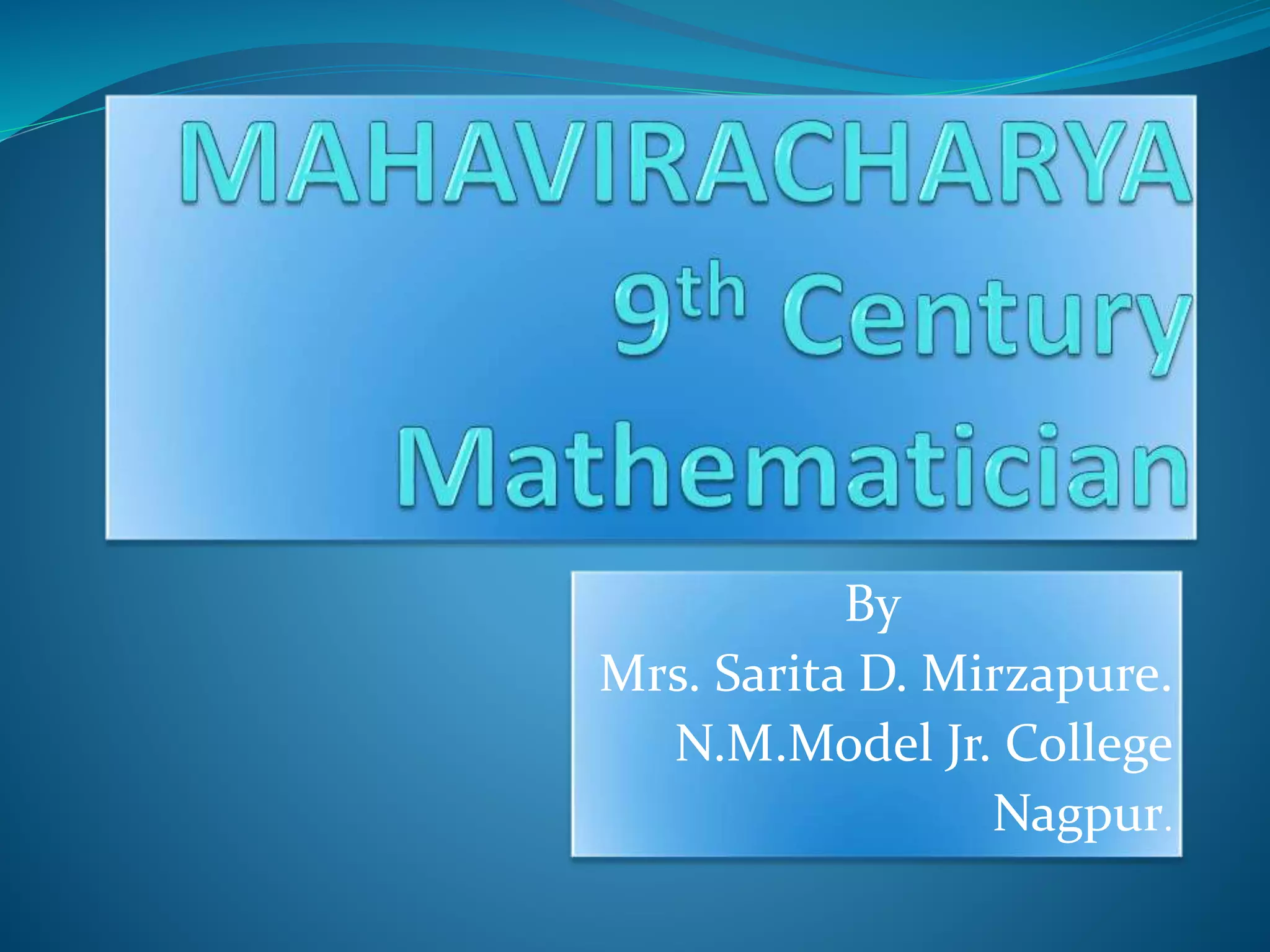
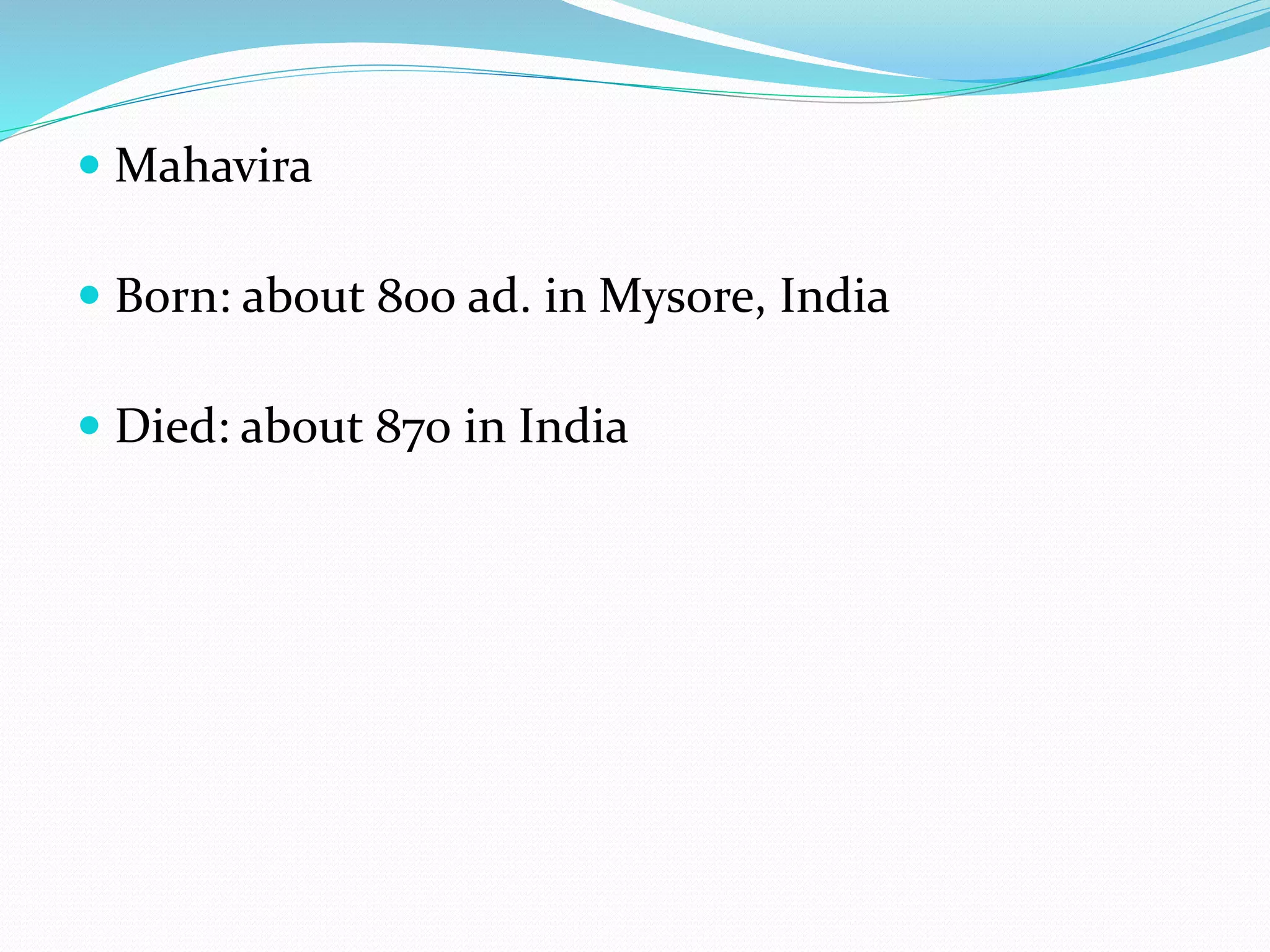
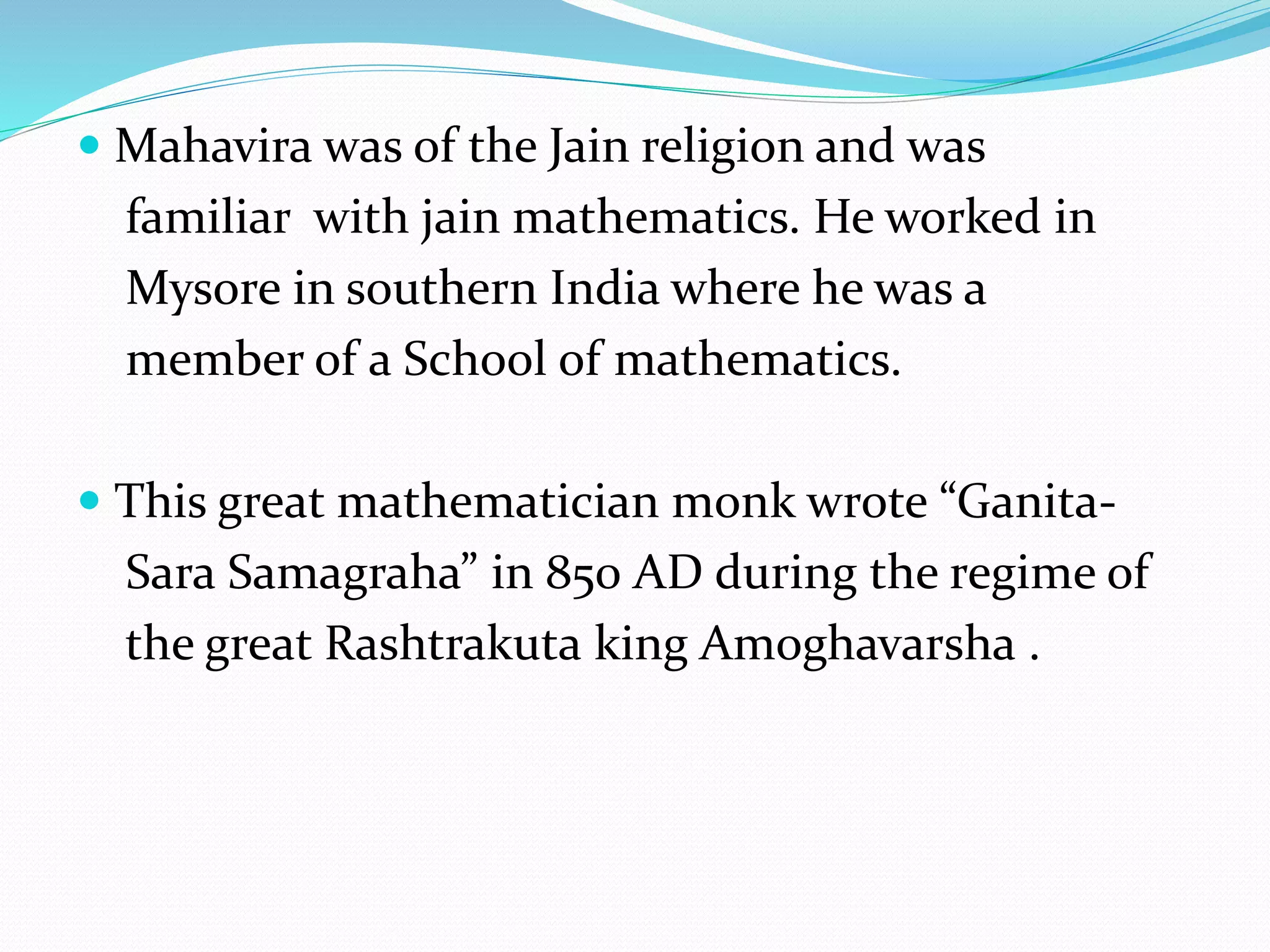


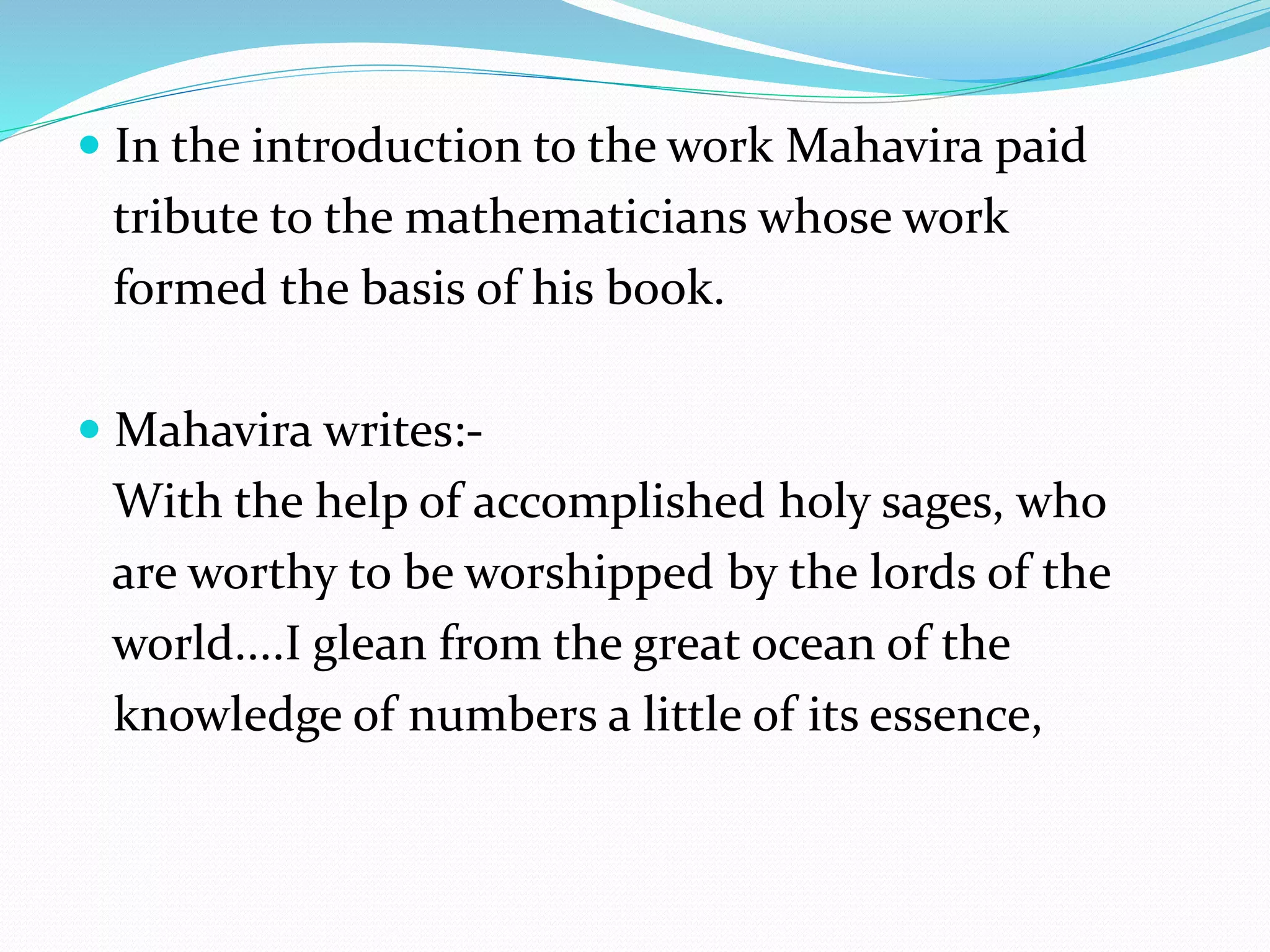
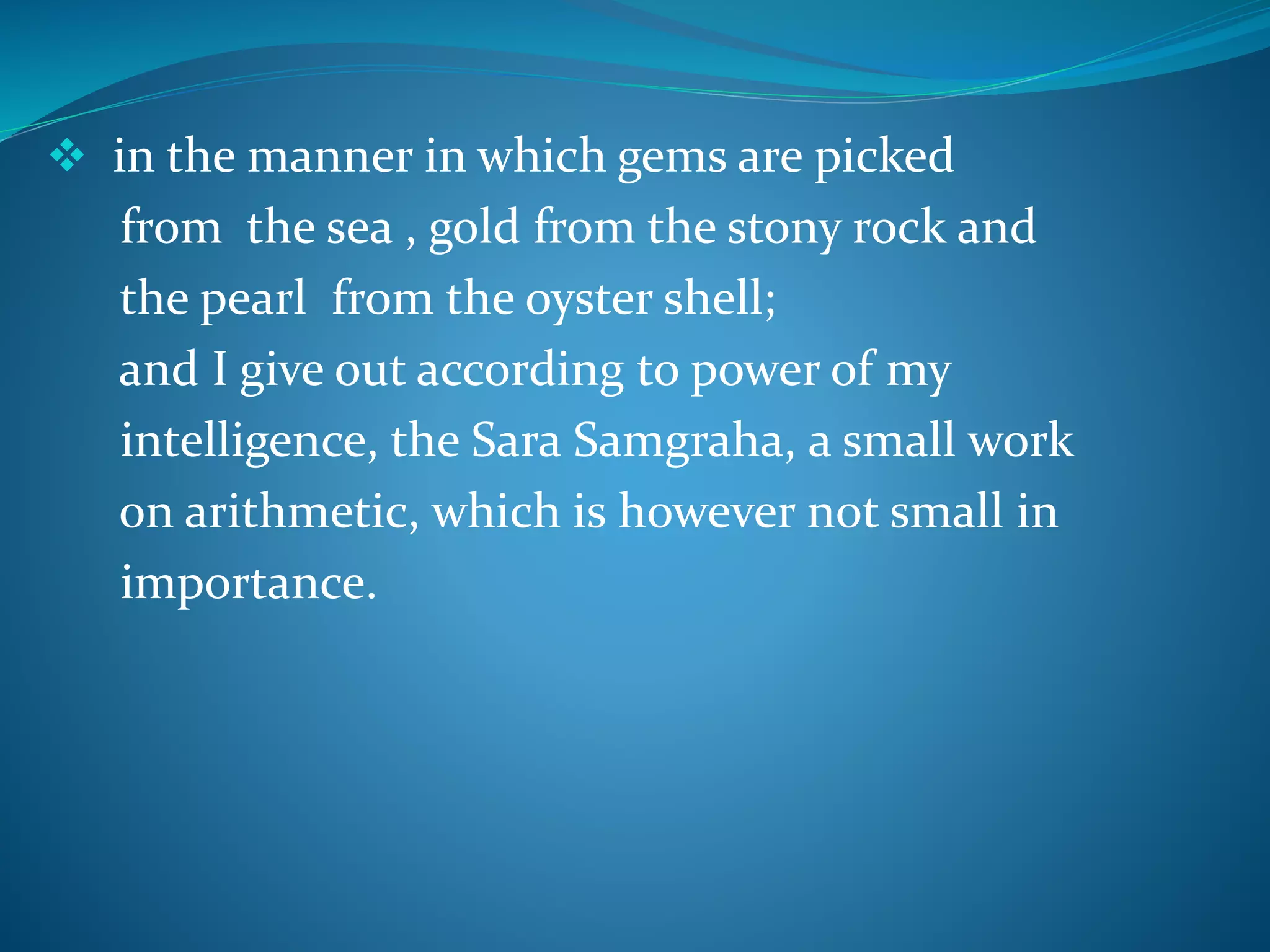
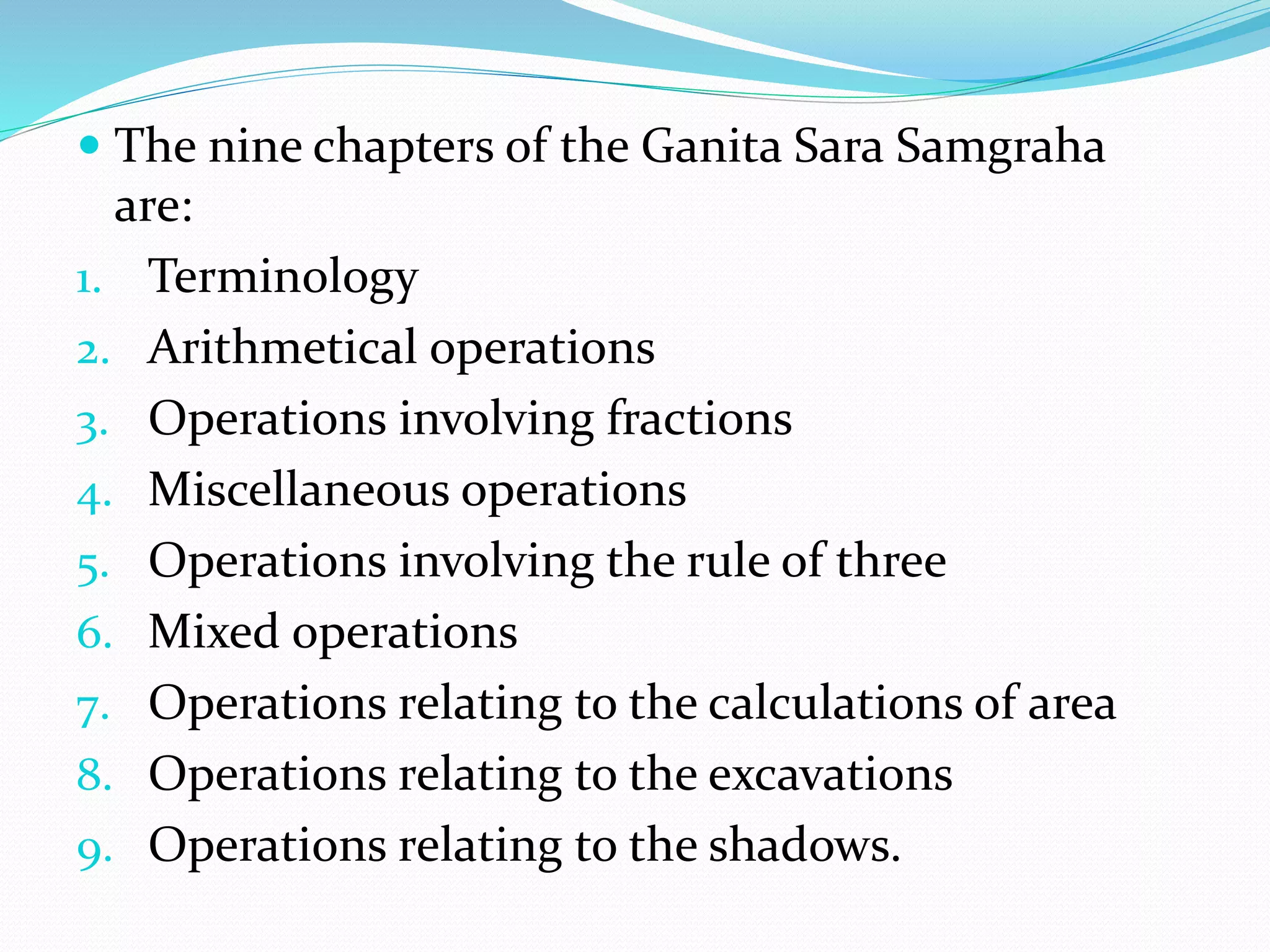



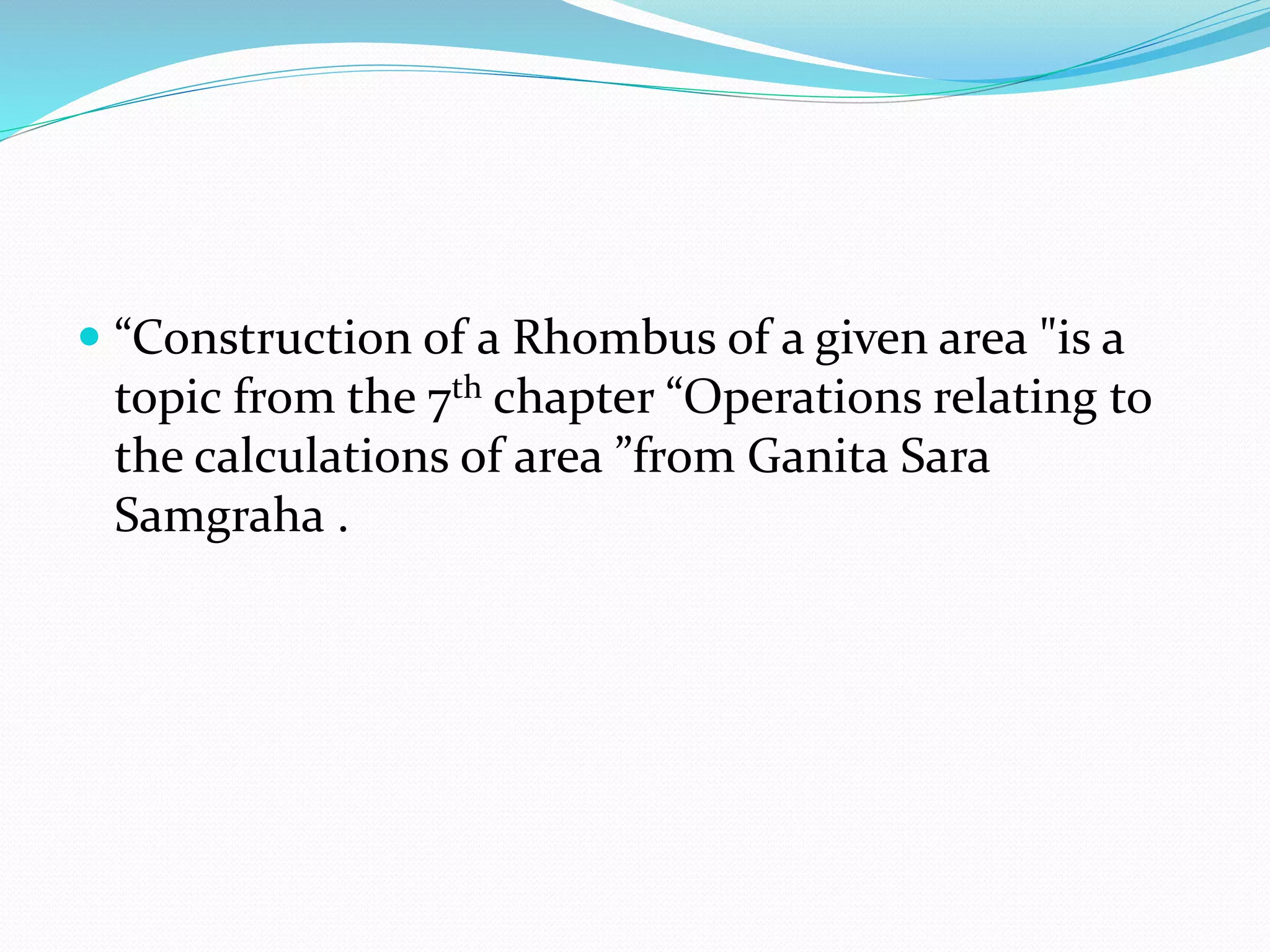
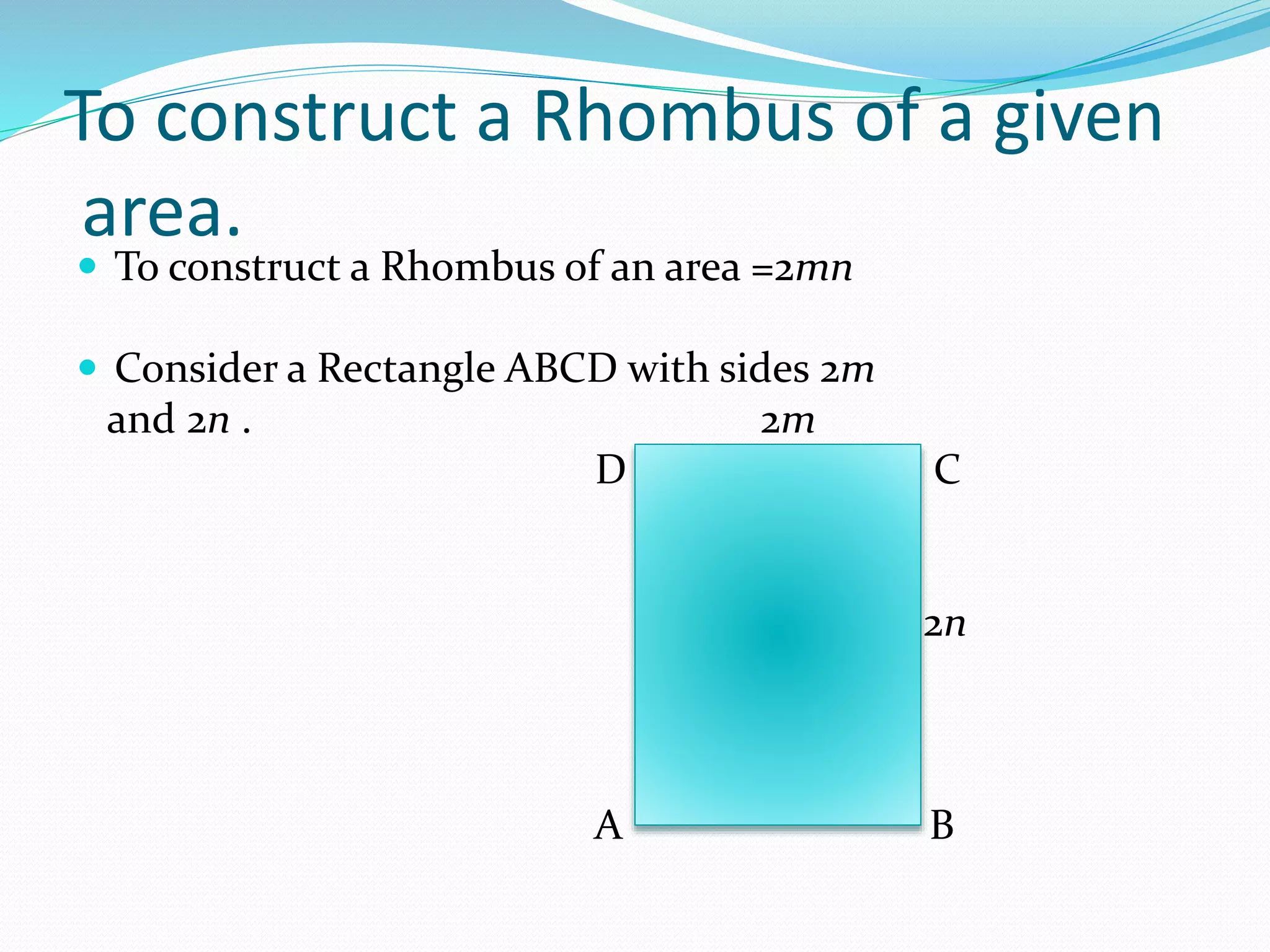

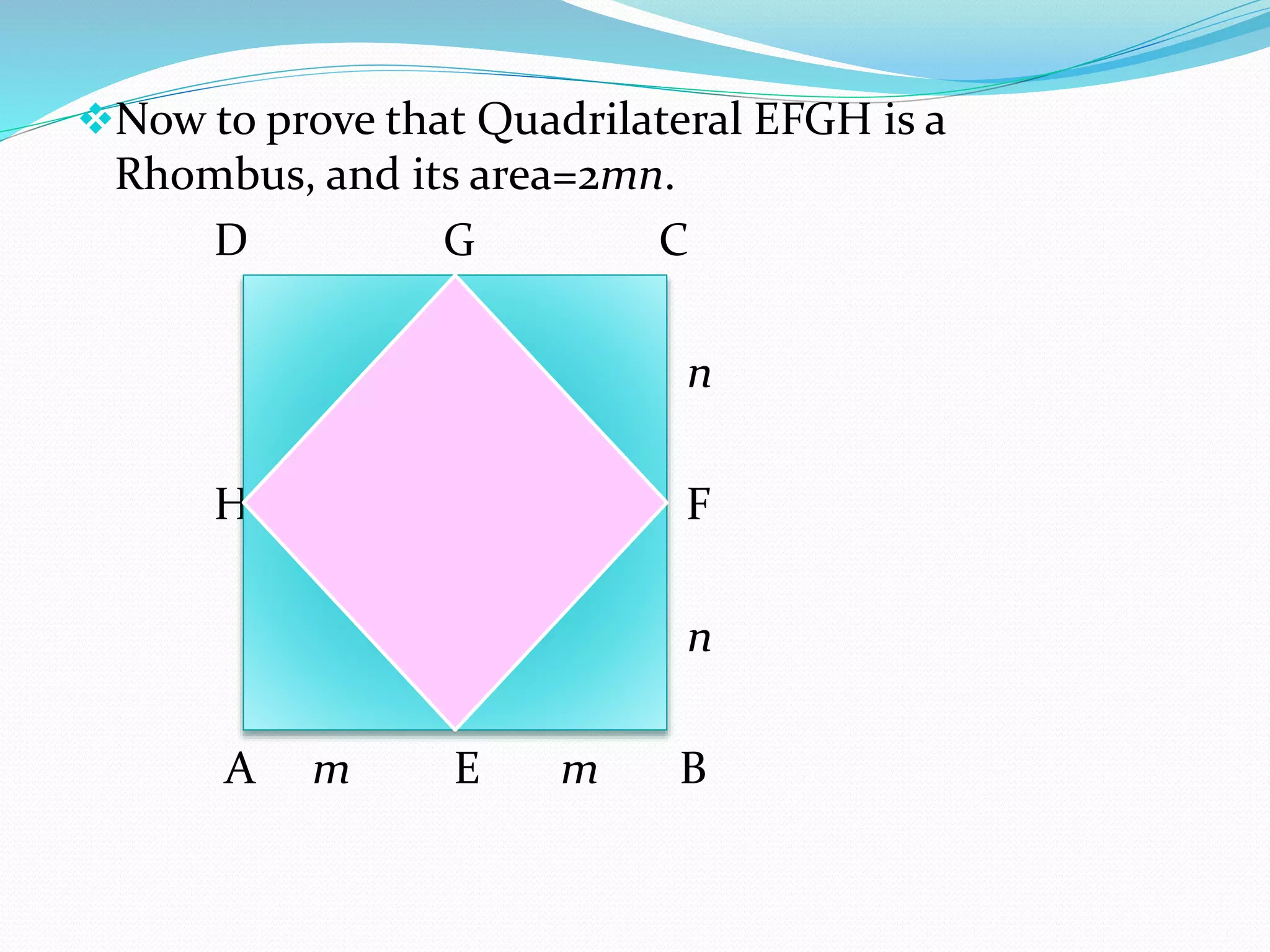
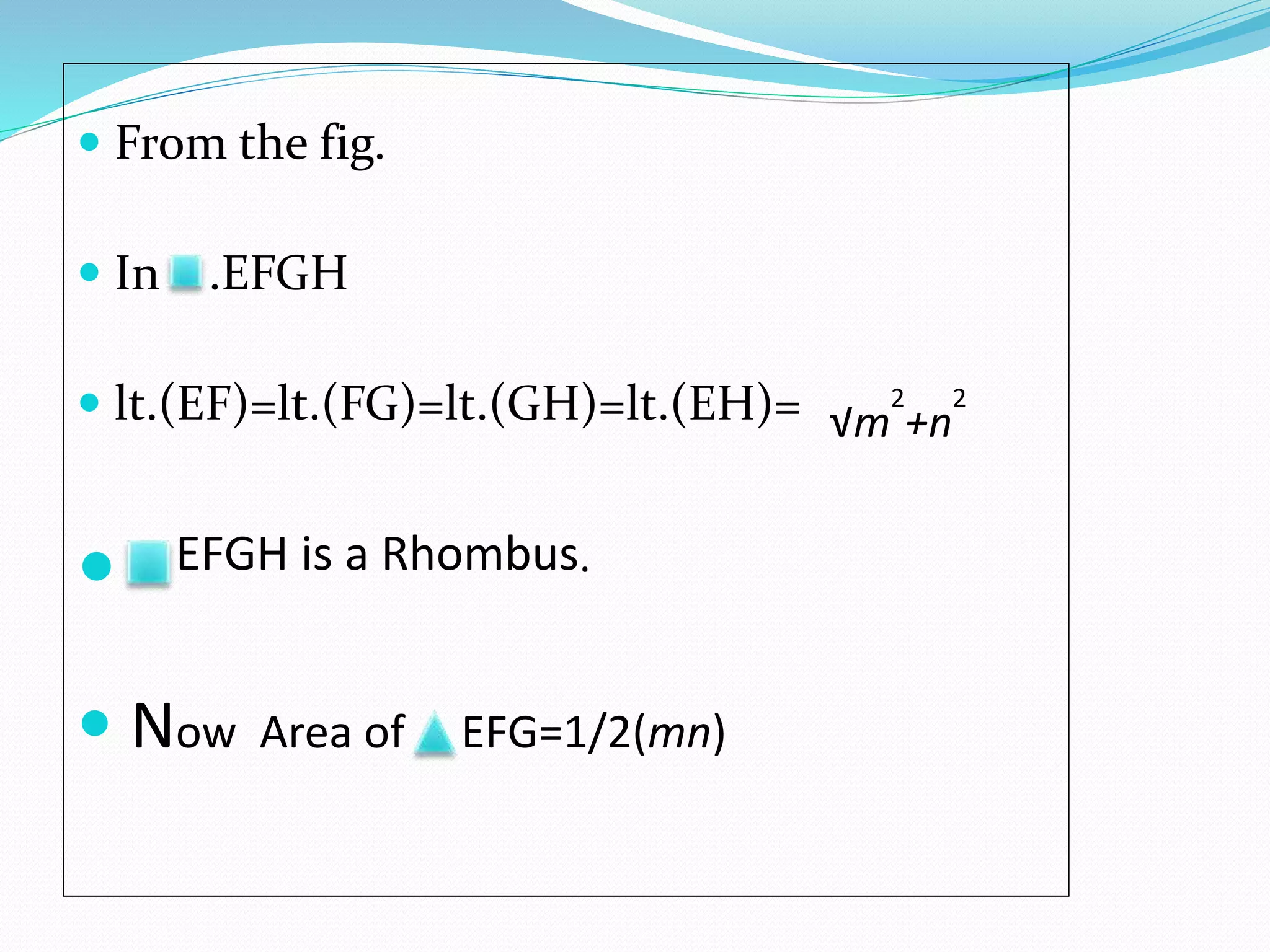
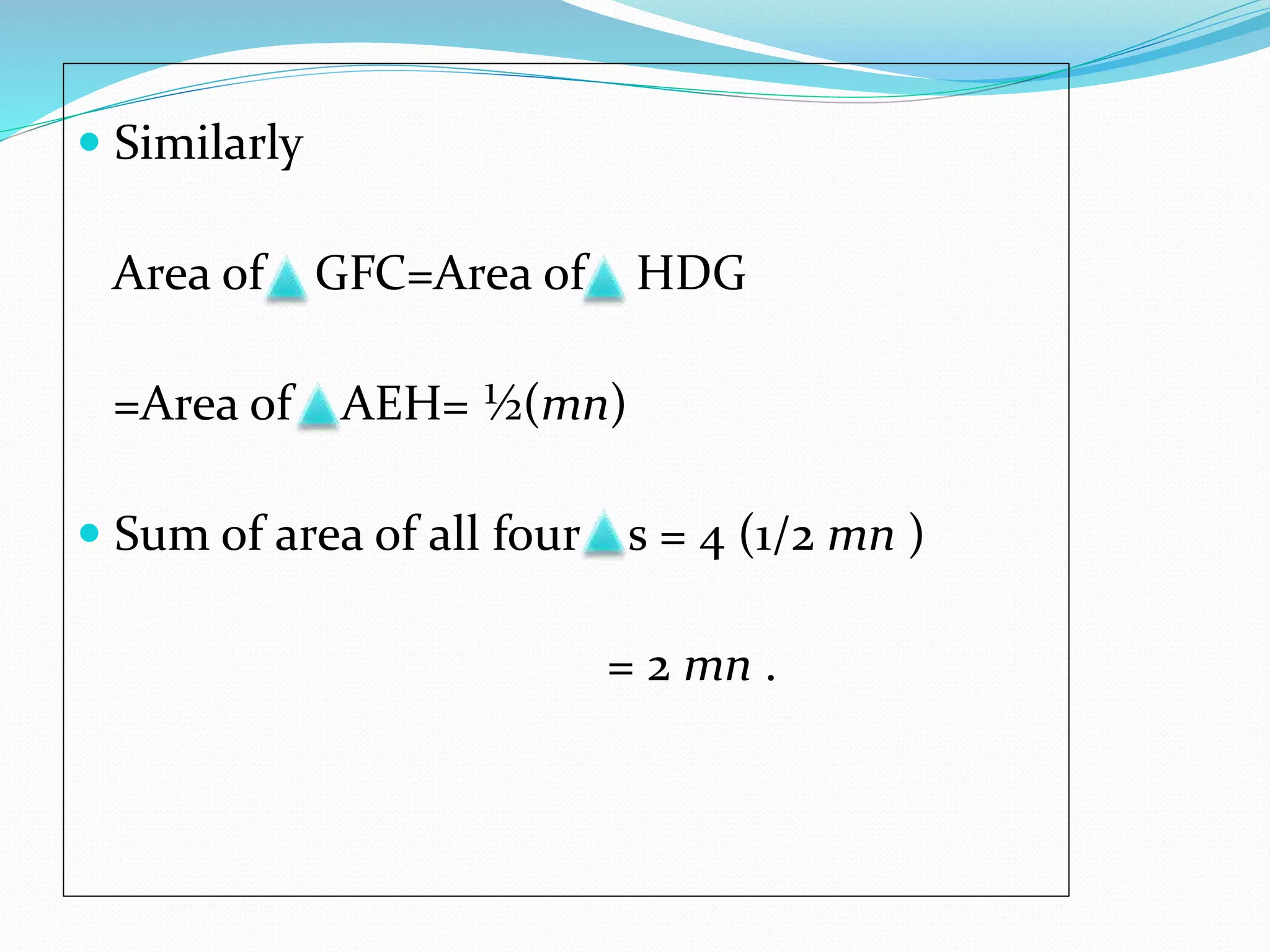

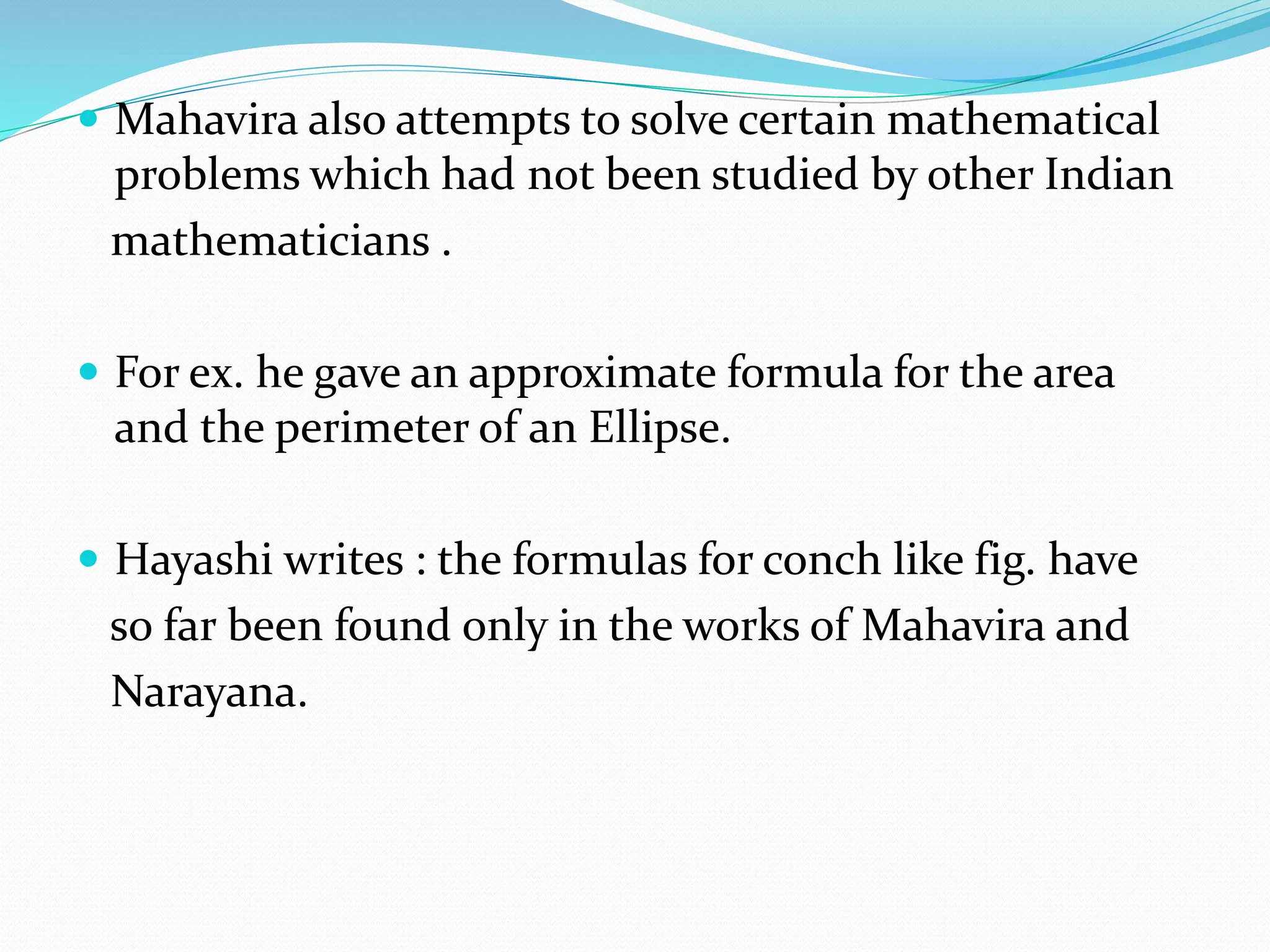
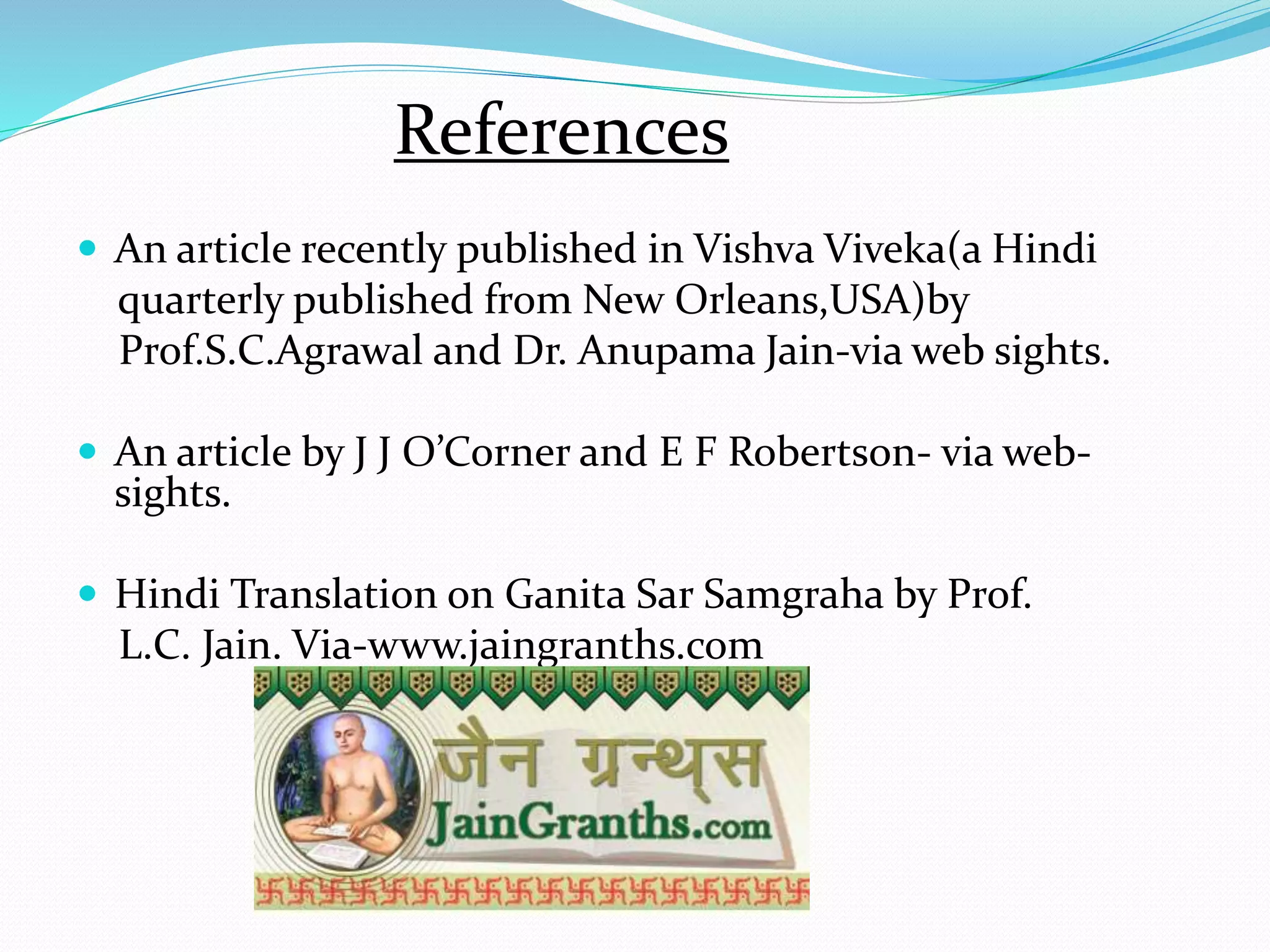
![To construct a_rhombus_of_a_given_area[1]](https://image.slidesharecdn.com/toconstructarhombusofagivenarea1-150508053820-lva1-app6892/75/To-construct-a_rhombus_of_a_given_area-1-21-2048.jpg)